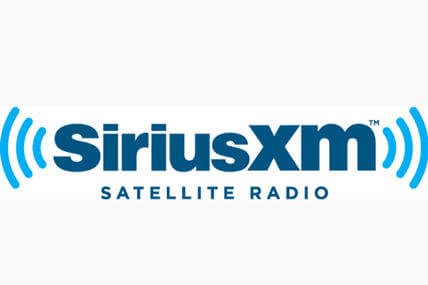The very first entertainment technology to hit the road was radio - and for years it was the only one. AM and later FM provided music, news, weather, and other info to enhance cruising around town and to break the boredom of a long road trip. After other formats began to allow drivers to listen to what they wanted instead of what the DJ wanted to play, radio lost some of its supremacy as king of the road.
But in the last few years, modern technology has breathed new life into this age-old format. Satellite radio offers CD-quality sound and hundreds of commercial-free channels of music, news, sports, weather, traffic, and more. HD Radio also has CD-quality sound and hidden sub-frequencies that offer alternative, largely commercial-free programming. Plus, unlike satellite radio, HD radio is free.
And there's a newer wireless technology increasingly creeping into cars: Bluetooth. Originally designed for hands-free mobile phone use behind the wheel, Bluetooth's Advanced Audio Distribution Profile (A2DP) issues in a new era in wireless entertainment.
In this article, I delve into the latest in radio, including satellite and HD Radio, and how you can get it into your car. I also take a look at how Bluetooth is expanding from mobile phone to mobile music applications and what it means to the car audio enthusiast.
Music of the Spheres: Satellite Radio
The introduction of satellite radio in the early part of the twenty-first century was the most significant change to the medium since FM became popular in the 1970s. It was also the first time people were asked to pay for radio, which up until that time been free.
Analogies were made to the launch of cable TV in the 1970s, which has since proved to be wildly popular. Although satellite radio hasn't experienced the pervasive popularity of cable TV, it has changed the way people think about radio and what the medium can offer - and racked up millions of subscribers in the process. And satellite radio makes a lot of sense for the car: Besides entertainment programming and news, the service can also provide up-to-the-minute and accurate traffic information.
Soon after these companies were born, aftermarket car audio companies began siding with one satellite radio provider or the other to offer tuners that could receive the service. XM and Sirius also aligned with car companies as part of their marketing plans to take the service mainstream.
In 2008, the two satellite radio companies, XM and Sirius, merged to form one company. Satellite radio is yet another way that the modern car audio enthusiast can enjoy hours and hours of great music, entertainment, news, weather, sports, and traffic info behind the wheel.
XM/Sirius has since partnered with Acura, Buick, Cadillac, Chevrolet, Ferrari, GMC, Honda, Hummer, Hyundai, Infiniti, Isuzu, Lexus, Lotus, Nissan, Pontiac, Porsche, Saab, Saturn, Scion, Subaru, Suzuki, and Toyota. Sirius has linked with Audi, Bentley, BMW, Chrysler, Dodge, Ford, Infiniti, Jaguar, Jeep, Land Rover, Lexus, Lincoln BMW, Maybach, Mazda, Mercedes, MINI, Mitsubishi, Nissan, Scion, Subaru, Toyota, Volkswagen, and Volvo.
XM/Sirius offers a free trial period for buyers of new cars equipped with their respective services, hoping that after these drivers have a taste of satellite radio, they'll continue with their subscriptions. According to industry sources, the take rate on continued subscriptions has been a little more than 50 percent.
But the car audio aftermarket is the source for adding satellite radio to an existing car or system, and there have never been more options for getting the service. Plus, more car audio companies have become non-partisan towards satellite radio and now offer ways to get either or both services using their equipment.
When satellite radio was first introduced, a bulky tuner box and a large, unsightly antenna was needed to access the service. But today, the tuners are often built into a head unit with the addition of a tiny chip, and antennas have shrunk significantly as well. Plus, there are numerous portable options that can be easily added to a vehicle's sound system. For example, both XM/Sirius offers portable radios that you can use anywhere, just like an MP3 player (in fact, some have built-in MP3 players) in a home while docked into an entertainment system, or anywhere else while docked in boom box. These portables can be integrated into a vehicle as well.
HD Radio
HD Radio probably would have come to pass even if satellite radio didn't begin to pose a threat to traditional terrestrial or land-based broadcasters. But from the beginning, HD Radio was heavily promoted as a "free" alternative to satellite radio. The mobile-music listener is the real winner in the radio wars because it all boils down to better sound and more choices for in-car listening.
With HD Radio, a digital signal piggybacks onto regular analog radio broadcasts. Because the HD Radio signal is digital, FM can potentially sound as good as a CD and AM as good as FM. Plus, there's virtually no static, drop-offs, hiss, or the other noises or reception problems associated with analog radio broadcast.
An HD Radio station can also offer multicasting, meaning it can broadcast separate programming on a sub-frequency of its allotted spot on the dial, which can only be picked up by an HD tuner. Most stations use the sub-frequencies to broadcast largely commercial-free programming that's much like satellite radio. For example, a country station in Portland, Oregon provides a sub-frequency that broadcasts blues programming, whereas a smooth jazz station in Miami offers classical music as its multicasting option.Another advantage of HD Radio is that information such as artist name and song title as well as weather and traffic alerts and even stock quotes can be sent with a signal and shown on the radio's display. And HD Radio promises to provide many other features in the future, including:
- Real-time traffic reports
- Surround sound
- Store-and-replay functions that allow rewinding a song or even recording an entire program to play back later
- On-demand news and information
- Buy buttons that allow purchasing everything from music to products advertised on a station
Linking in With Bluetooth
You probably didn't know that Bluetooth was named after a medieval Scandinavian king who reportedly had a penchant for eating blueberries.
Bluetooth is the strange name (coined by the Swedish mobile phone company, Erricson, which developed the technology) for technology that uses a short-range network to wirelessly connect electronic components. It's been a huge hit in the mobile-phone market because it allows hands-free operation. But it has expanded into everything from computer printers to photo frames that display digital pictures.
But it's in the car for hands-free mobile phone use that Bluetooth has really caught on with consumers because it's a natural for safe mobile-phone use behind the wheel. But in some states it's more of a requirement than a convenience if you want to talk while driving.
Bluetooth Head Units
With more mobile phones including Bluetooth these days, it's become standard equipment or an option on many new cars. It's also a popular add-on car accessory. Aftermarket Bluetooth kits that add hands-free mobile phone capability to a car range from simple plug-and-play kits that can move from vehicle to vehicle, to fully wired applications that automatically mute a car's audio system when a call comes in and plays the call over the car's speakers.
But Bluetooth isn't just for phones anymore. Several accessories manufacturers offer products that allow adding Bluetooth wireless capability to iPods and other MP3 players so that they can play over aftermarket and even stock car audio systems.
From Car Audio for Dummies, copyright © 2008 by John Wiley & Sons, Inc., Hoboken, New Jersey. Used by arrangement with John Wiley & Sons, Inc.










